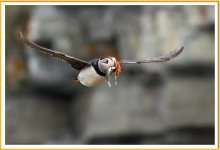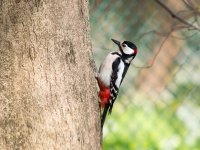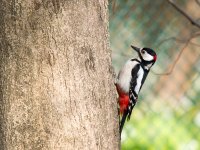One more, the last shot of the young one before it left the nest. The mother was perched up on the post above the box.
View attachment 591634
These were all done with the electronic shutter, but I am not happy with the distortion it causes if there is even the slightest movement with the 400. Doesn't really show here, but there were a number of shots that looked simply funny out of shape. I was hand holding, but supporting the end of the lens on the opening of the hide.
Hard to know whether the sound of the normal shutter would have alarmed them or not. My plan was to first get a bunch with the silent mode, and later try with the normal mode. Didn't get the chance...









